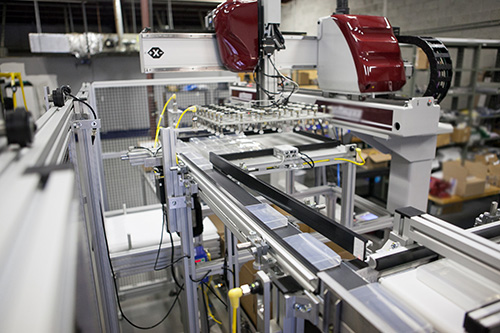7 Ways to Help Improve Conveyor Efficiency in your Production Line!
Posted on
A lot of time and planning goes into creating a production line. And installing a production line, big or small, costs money. Your customers depend on your production line running smoothly, and so do your employees. So it's critical to ensure your conveyor line is running as efficiently as possible.
The Reality of Conveyor Downtime
Conveyor downtime is one of the biggest costs to production efficiency in the manufacturing process. Being a system that can be fully automated, without the need for human assistance, it is possible for conveyors to run 24/7, producing and packaging products all day and night. Unfortunately for many companies, this simply isn’t happening, and it's costing them precious time.
7 Ways to Improve Conveyor Efficiency in your Production Line
How can I decrease conveyor downtime?
-
Allow the conveyor to move as efficiently as possible
-
Conveyors are only meant to carry so much weight at any given moment. While some are capable of carrying lots of weight, pushing a conveyor to its limit will decrease its maximum speed and cause damage over a long amount of time. Even when conveying heavy products, making sure not to overdo, a single conveyor is important to ensure an efficient and healthy production line.
-
Keep the conveyor running at all times
-
This is the easiest way to decrease conveyor downtime, but it's important to not leave conveyors running for no purpose. As long as the conveyors are fulfilling their purpose they should be moving, however, and making sure that they’re always needed is important in making the manufacturing process and quick as possible.
-
Make sure that all parts of the manufacturing process are running at equal paces
-
Often times in the manufacturing process, products will need to be delayed in order to allow other parts, such as packaging materials, to catch up to the rest of the production line. Reworking the existing conveyor systems to bring all of a product parts closer together in time can seriously reduce the need for any sort of delays and stall in a conveyor system.
-
Automate everything you can
-
Human assistance is often needed within the manufacturing process to ensure that everything that can run smoothly does run smoothly. Any abnormal products or production issues are able to be identified and dealt with by humans far quicker than any machines can. In some circumstances, though, humans might not be needed. When these cases arise, the short term cost of automating what they do will be more than paid for from long term production benefits.
-
Make sure that parts aren’t at a standstill or being accumulated unless they are on a conveyor whose function is to accumulate them
-
Similar to point number 2, making sure that parts aren’t just sitting around being dead weight is crucial. While there are many conveyor systems that are specially designed to help stall and accumulate products, this is often done for a specialized reason. Most of the time your products should be moving, moving, moving! In theory a perfectly efficient production line should never have to wait unless absolutely required. (Giving time for products to cool, settle, or be tested/inspected)
-
Have multiple conveyor systems running at a single time to improve efficiency and to lighten the workload on each one.
-
When you have so many products that need to be moved, a single conveyor might get overworked, slowed down, or require special filtering systems to help ensure the safe travel of products. Overloading a conveyor may also result in production issues that can serious affect the bottom line of a production process. Implementing multiple conveyors that do the same job will help reduce the workload of each one, allowing them to run at their maximum capacity while still keeping up with efficiency.
-
Do inspections and repairs on conveyors regularly
-
Over time, the motors and belts of conveyors will inevitably wear down. As the wear and tear adds up, conveyors begin to move slower and slower, while taking up more power to do so. Checking up on conveyor systems BEFORE they break is an important process to ensure that you can get ahead of any problems before they occur. Having a solid routine maintenance plan in place is key.
Do you have questions about this blog post or conveyors? Then fill out the form below and we'll be happy to get back to you.

